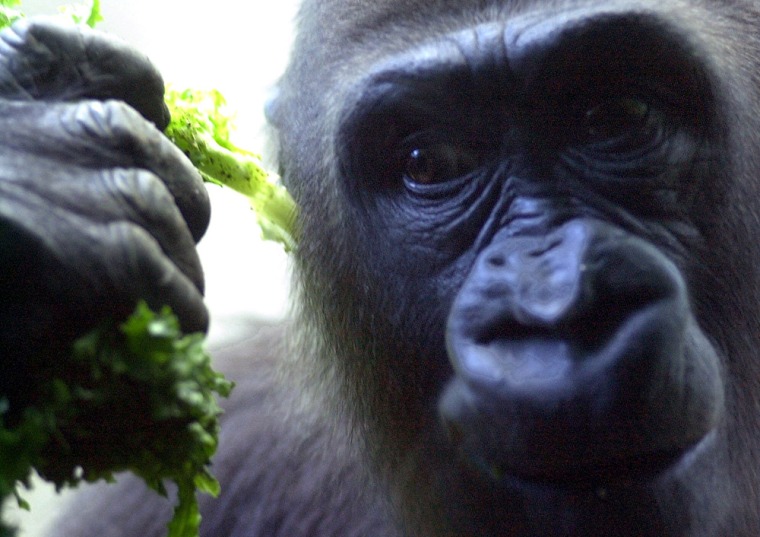Years of civil strife in eastern Congo have decimated the habitat of the eastern lowland gorilla, cutting the apes' population by more than 70 percent in the past decade, experts said Wednesday.
With the number of apes estimated to have dropped to 5,000 -- down from about 17,000 in 1994 -- a U.S.-funded program is trying to stem the habitat loss by creating community nature reserves.
"The rate of decline of this subspecies is unprecedented," Clare Richardson, who heads the Atlanta-based Dian Fossey Gorilla Fund International, told The Associated Press.
The number of gorillas began declining seriously after millions of people fled their homes during civil wars in Congo and neighboring Rwanda, taking refuge in the forests that are home to the apes, known scientifically as Gorilla beringei graueri.
The crisis worsened as soldiers, tribal fighters and other armed factions began fighting in remote areas of Congo, setting up military camps and hunting for food in the forests.
The spread of small-scale mining for gold, precious stones and columbine tantalite, a mineral used to make cell phones and other high-tech gadgets, compounded the problem.
The clearing of land for farms and pastures also took a toll, Richardson said.
The affected area -- more than 7.4 million acres -- is home to about 97 percent of Congo's eastern lowland gorilla population.
The stricken landscape also supports an array of other species, including the chimpanzee, forest elephant, Nile crocodile, Congo peacock and leopard.
To help preserve eastern Congo's natural diversity, the Dian Fossey fund is launching a $2.9 million program to help tribal chiefs and villagers create community nature reserves. Fossey set up camp in Rwanda's Volcanoes National Park in the 1960s and documented her work in the book "Gorillas in the Mist," later adapted into a movie.
Once created, the reserves will work with nearby national parks to form a network of biological corridors, said Patrick Mehlman, head of Africa programs for the Dian Fossey fund.
The program's flagship project, the Tayna Gorilla Reserve, is a 270-square-mile reserve created with land donated by local tribal chiefs, said the fund's Erica Archibald. The chiefs collectively manage the reserve.
Seven other similar projects, covering more than 3,860 square miles, are being developed.
"This may be our last chance to reverse this crisis," Mehlman said. "The only viable solution to this crisis is the participation of local people in the stewardship of their biological heritage."
Funding for program is coming from Conservation International, based in Washington, and the U.S. government's Central African Regional Program for the Environment.
"The one thing that luckily will happen with the funding is we will be able to pay local people that work in the reserve," Archibald said. "They have been doing this for no money, no profit, no salary."
